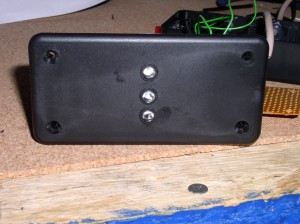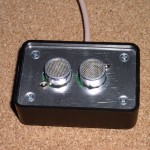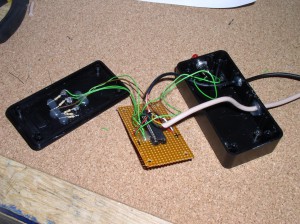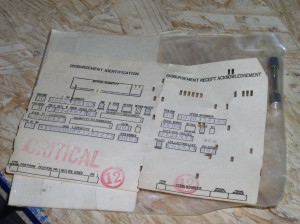In true geek style I went overboard in fulfilling this long over due honey-do list item. It is a tight fit for our minivan in our “oversize” garage after I added storage shelves to the front wall. The wife has wanted some way to know when she is pulled in far enough for some time and I had been putting it off. An article in the latest issue of Nuts and Volts inspired me to finally do something about it.
Enter my version of the Garage Parking Assistant.

This is the face of the main unit, which consists of 3 lights (high intensity LEDs) in traffic signal style of red, yellow, and green.

It works by measuring how far your vehicle is from the wall via this ultrasonic range finder. With no vehicle in all lights are off. As you enter the garage the Approach light (green) turns on. When you get near the stopping area the Slow light (Yellow) turns on and when in position the Stop light (red) then lights. If you go too far in the red light flashes at you to back up. If no distance change is detected for 2 minutes then all LEDs go dark to save power and LED life. Calibration is done by holding down the button for more than 2 seconds, which enables a programming mode. Each light is activated in turn and you push the button when the vehicle is at the desired distance. I have not yet mounted this in the garage but work shop tests have been successful. The unit is installed and has been working perfectly for several weeks. The wife approval factor is high.

The circuit is simple enough that I have not yet drawn a schematic. It consists of an AVR ATmega8, SRF04 range finder, 3 LEDs with resistors, and a push button. Two Radio Shack boxes house the main unit and range finder and the whole thing is powered by an old phone charger that puts out a reasonably filtered 5VDC.
AVR GCC code



